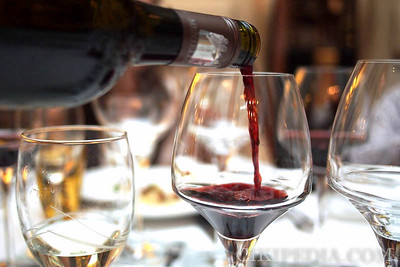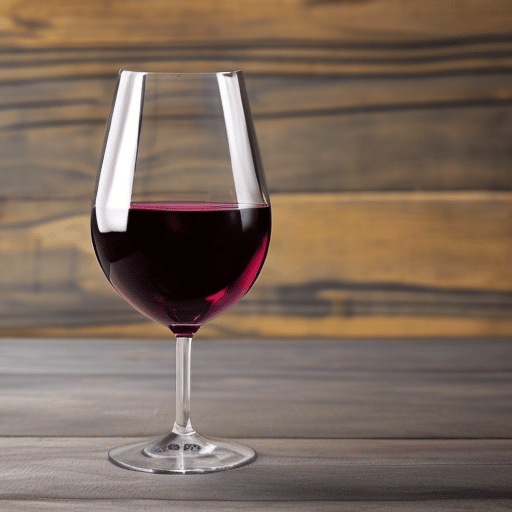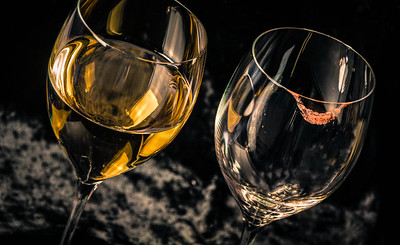When it comes to a one-size-fits-all, wine is what cuts across every meal, occasion, and situation. The world of wine is one of the most diverse and immersive, with a wide range of colours and flavours to choose from.
If you want to understand wine and how it came to be, you need to know the wine age. This is because the age of the wine is key in understanding its intricacies.
In this piece, we will look at the alcohol content in wine, which is affected by age, fermentation process, and storage.
At the end of this article, we will be able to answer how much alcohol is in a glass of wine on average.
Prefer to watch a video? We got you covered:
Average Alcohol Content in Wine

Compared to other alcoholic drinks, wine is pretty low in pure alcohol content. It has a low Alcohol By Volume (ABV) content. Alcohol By Volume content of a drink is a percentage measurement of the full amount of alcohol in a drink.
Standard drinks have an ABV average of 12%. This may change depending on the type of wine, the vineyard it was sourced from, and the maker’s desired ABV ratio composition. At times wines from the same vineyard made by the same winemaker may vary in alcohol content.
Wine with a high ABV ratio has weaker flavours. This only happens during the fermentation stage as well as the storing.
However, this varies from one wine to another. We will look at some popular wines and their different alcohol content to better understand this.
It is standard to find the ABV rating of wine or any other alcoholic drink printed on the label.
Cooking Wine
Cooking wine is primarily meant for cooking and not for drinking. This is not mean that you cannot drink it. You absolutely can, but it has been said that the average ABV rating of cooking wine that stands at 12 to 20% might be misleading.
Simply because cooking wine loses its alcohol content faster than other wines, this can be credited to the making process.
Unlike most drinking wines that depend on sugar to have a higher alcohol content rating, cooking wine is made with salt. It is more fermented because the high alcohol content is expected to evaporate during cooking.
Moscato Wine
Moscato wine is a sweet dessert wine popular for its low alcohol content rating of 5 to 7% ABV. It is made from Muscat grapes from Italy.
These grapes are commonly used to make raisins as well as other drinks. The choice of grapes influences the sweetness of the wine, giving it a light and sugary flavour that is similar to that of peaches or oranges.
The most popular Moscato flavours are citrus flavours which have gained notoriety over the past couple of years. If you like freezing wine, then this should be your go-to choice.
Plum Wine
Plum wine is especially popular in Japan and Western Africa. It has an average alcohol level of 12%. It originated in China before making its way to Japan, where it was known as Umeshu.
The name Umeshu is derived from the source of the wine, which is the Ume Plum. The Ume plums were used as medicine in most Southeast Asian cultures. This is because plums contain natural antioxidants.
The Ume plums are fermented with sugar to make this wine, making the wine sweet and sour. The sugar added to the plums gives this wine a decent alcohol content rating. The flavour of plum wine can be tangy and acidic.
Port Wine
Port wine is a denser version of red wine. It has darker pigmentation and is heavy. This wine has a higher alcohol concentration than most wines standing at 16 to 20%, with an average ABV average of 18%.
Port wine has deeper and darker pigments because it is a fortified wine. This means it had distilled grapes added to it during the fermentation process.
Adding these distilled grapes or grape spirits stops the fermentation process and the conversion of sugar to alcohol. This gives it a sweeter taste compared to other red wines.
Doing this also increases the alcohol content of the wine. Finally, after fermentation, aeration and decanting are key in enriching the flavour of the port wine.
Red Wine

In most red wines, the wine alcohol content normally ranges between 12% and 15%. This translates their ABV measurement to stand at a subtle 13.8%. Compared to white wines, red wine has more alcohol content. And this can be traced back to the grapes used to make it.
Unlike white wine, red wine is made using grapes harvested very late in the season. As a result, these grapes have higher sugar content, leading to increased alcohol content levels in the fermentation process.
The high levels of tannins back this during fermentation. As a result, red wine acquires a deeper and more complex colour. This is what causes staining when spilt on surfaces.
Rose Wine
Rose wine, otherwise known in other quarters as Rosé, falls between red and white wine. It has an average ABV rating of 12%.
To make this wine, winemakers ferment the grape while still having their skin on for a short time. This adds colour without creating pigmentation, keeping it from becoming a true red wine.
Since this wine falls between the two primary wine colours, it may vary in colour, with some having a pale red tint that can be seen as pink to others being almost rose gold. Rosé wines can also come in orange, purple, brown or even pale blue shades. They also vary in alcohol content and flavour.
Sweet Wine
While the sweetness of a wine is often linked to the wine’s alcohol content, most sweet wines do not have a high alcohol content rating. Most sweet wines have an average ABV rating of just 10%.
Sweet wines are mostly white wines that cover the dessert menu. Depending on the sweet wine you are having, the alcohol content can be as low as 5% ABV percentage.
What a sweet wine lack in wine alcohol content, they make up for with carbs.
Wine Cooler

Compared to other wines, cooler wine has a lower alcohol content. The average wine alcohol content measurement of wine coolers stands at a mere 4 to 6%. This is because wine coolers have only a certain amount of wine included. Often, wine coolers combine wine and fruit juice, wine and carbonated drinks, or even wine with added sugar.
This type of wine is especially popular at parties where it is served as punch. Wine coolers gained notoriety in the mid to late 1980s because of their sweet taste and how much one could consume in one sitting before getting drunk.
Today you will find in your local store wine coolers with 0% alcohol. Some are even made with malt to make malt liquor.
White Wine
Compared to red wine, white wine is more subtle and has a lower alcohol content, averaging 5% to 14%. The average ABV measurement of this wine stands at 10%, and this is because of the grapes used to make it. This wine is made with less ripe grapes, which means less sugar.
The low sugar content in the grapes converts to ethanol at a lower rate during fermentation. This innately allows the wine to have a refreshing and light flavour. In addition, the low alcohol content in this alcoholic beverage means you can have more wine in one sitting than red wine.
Being Contented With Your Number
Now you know how much alcohol is in a glass of wine. It’s always important to be responsible when drinking, whether you’re alone or with friends. Bear in mind that even the lowest alcohol ratings can prove detrimental.
Typically, the recommended units of alcohol for men and women in the UK are 14 units in a week. This is the same as one and a half bottles of wine with an average Alcohol By Volume of 12%.
Therefore, if you’re to experiment with wine to find out what works for you, it is best to know the alcohol rating of each wine to make informed decisions. It may be wise to opt for wine coolers if it’s going to be a long night.
Remember, excessive alcohol intake is harmful to your health and can cause addiction and alcohol abuse. Never drink and drive.

